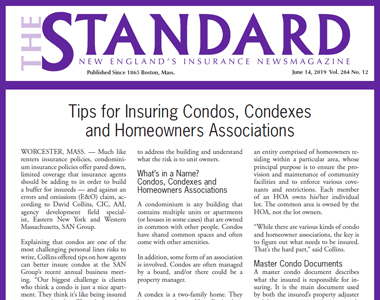Much like renter’s insurance policies, condominium insurance policies offer pared down, limited coverage that insurance agents should be adding to in order to build a buffer for insureds — and against an errors and omissions (E&O) claim, according to David Collins, CIC, AAI, agency development field specialist, Eastern New York and Western Massachusetts, SAN Group.
Explaining that condos are one of the most challenging personal lines risks to write, Collins offered tips on how agents can better insure condos at the SAN Group’s recent annual business meeting. “Our biggest challenge is clients who think a condo is just a nice apartment. They think it’s like being insured on a renter’s policy. They don’t understand that it’s a much more complex account,” he said.
When insureds buy a home and a stand-alone homeowner’s policy, agents can obtain information on it fairly easily and know they have to insure the entire dwelling. Likewise, when insureds are renters, they do not own the building, so agents focus on insuring contents. There are a multitude of tools available to help agents figure out how much the client needs to insure.
Read the full article published June 14, 2019 in The Standard. Reprinted with permission from The Standard, Copyright 2019, Standard Publishing Corporation, Boston, MA. All rights reserved.
